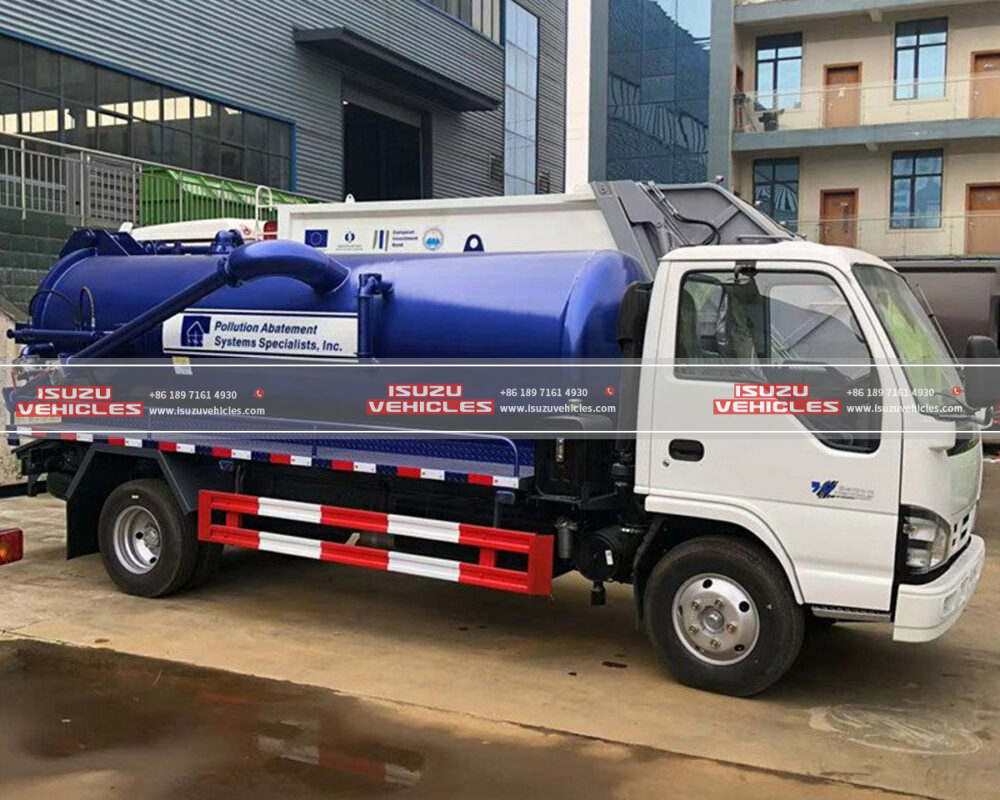ISUZU vacuum trucks are indispensable tools for maintaining clean and functional urban environments, from clearing storm drains to managing industrial waste. However, their efficiency and longevity depend on proper maintenance. A well-maintained vacuum truck not only performs better but also reduces operational costs and minimizes downtime. By understanding the key aspects of ISUZU vacuum truck maintenance—and drawing parallels to the care of other ISUZU vehicles like the ISUZU sweeper truck and ISUZU garbage truck—operators can ensure their equipment remains reliable and effective. This guide provides practical tips to keep your vacuum system running at peak performance.
1. The Importance of Regular Maintenance
Regular maintenance is the backbone of keeping an ISUZU vacuum truck in top condition. These vehicles operate in demanding environments, handling everything from wet sludge to hazardous debris, which can take a toll on their components. A proactive maintenance routine helps identify potential issues early, preventing costly repairs and ensuring consistent performance.
For operators familiar with the ISUZU sweeper truck or ISUZU garbage truck, many maintenance principles will feel familiar. Just as sweepers require clean filters and garbage trucks need well-maintained compactors, vacuum trucks rely on their suction systems and tanks to function efficiently. By adopting a disciplined approach to upkeep, operators can extend the lifespan of their vacuum trucks and maintain the high standards of cleanliness their communities expect.
2. Daily Inspections: Start with the Basics
Before starting your ISUZU vacuum truck, conduct a thorough inspection to ensure all systems are functioning correctly. This step is crucial for identifying minor issues before they escalate into major problems.
Key areas to inspect include:
- Hoses and Connections: Check for cracks, leaks, or loose fittings in the vacuum hoses and connections. Damaged hoses can reduce suction power and lead to inefficiencies.
- Tank Condition: Inspect the tank for signs of corrosion or debris buildup, which can compromise its integrity and reduce storage capacity.
- Hydraulic Systems: Ensure hydraulic lines and cylinders are free of leaks and that fluid levels are adequate. Hydraulic systems power the truck’s lifting and suction mechanisms, making their maintenance critical.
- Filters and Separators: Clean or replace filters and separators to prevent clogs and maintain optimal airflow. Dirty filters can strain the vacuum pump and reduce efficiency.
By incorporating these checks into your daily routine, you can catch potential issues early and keep your vacuum truck running smoothly.
3. Specialized Maintenance for Vacuum Systems
The vacuum system is the heart of the ISUZU vacuum truck, and it requires specialized care to ensure reliable performance.
Vacuum Pump Maintenance
The vacuum pump generates the suction power needed to lift debris. Regularly inspect the pump for signs of wear, such as unusual noises or reduced suction. Lubricate moving parts as recommended by the manufacturer and replace worn seals or gaskets to prevent leaks.
Tank Cleaning and Corrosion Prevention
After each use, clean the tank thoroughly to remove debris and residue. This prevents corrosion and ensures the tank remains in good condition. Apply protective coatings to vulnerable areas to further guard against rust.
Suction Nozzles and Hoses
Inspect suction nozzles and hoses for blockages or damage. Clean nozzles regularly to maintain optimal airflow, and replace hoses that show signs of wear or cracking.
These specialized tasks are essential for maintaining the efficiency of your vacuum truck, much like how the ISUZU sweeper truck relies on clean brushes and filters to perform effectively.
4. Fluid Management and System Checks
Proper fluid management is critical for the performance and longevity of your ISUZU vacuum truck.
- Hydraulic Fluid: Check hydraulic fluid levels regularly and replace the fluid as recommended by the manufacturer. Dirty or degraded fluid can lead to sluggish performance or component failure.
- Engine Oil and Coolant: Monitor engine oil and coolant levels to prevent overheating and ensure smooth operation. Regular oil changes and coolant flushes are essential for maintaining engine health.
- Vacuum Pump Oil: If your vacuum pump uses oil, ensure it is clean and at the proper level. Replace the oil as needed to maintain optimal pump performance.
By staying on top of fluid management, you can prevent system failures and keep your vacuum truck running efficiently.
5. Leveraging ISUZU’s Expertise for Long-Term Reliability
ISUZU is committed to supporting its customers with comprehensive resources and services to maintain their vehicles. From detailed maintenance manuals to access to certified technicians, ISUZU provides the tools needed to keep vacuum trucks operating at their best.
For businesses operating other ISUZU models, such as the ISUZU sweeper truck or ISUZU garbage truck, the same level of support and reliability is available. This unified approach ensures that every vehicle in the fleet operates at its best, delivering consistent results across a variety of tasks.
Training is another critical factor. ISUZU offers operator training programs that cover best practices for vehicle care, ensuring teams understand how to handle minor repairs or troubleshoot issues like reduced suction power. Knowledgeable operators are better equipped to spot early warning signs, whether it’s a drop in hydraulic pressure or an unusual noise in the vacuum pump.
Proper maintenance is essential for maximizing the efficiency and longevity of ISUZU vacuum trucks. By prioritizing daily inspections, specialized system care, and leveraging ISUZU’s expertise, operators can ensure these trucks remain reliable partners in urban cleanliness. And just as the ISUZU sweeper truck keeps streets spotless and the ISUZU garbage truck manages waste efficiently, a well-maintained vacuum truck plays a pivotal role in building cleaner, healthier communities. With ISUZU’s engineering and support behind you, every cleanup task becomes an opportunity to make a difference.
